This post contains affiliate links.
Discover the essentials of setting up your backyard chicken coop, from building costs to initial purchases. Explore effective budgeting strategies and cost-effective materials to ensure your coop is safe, comfortable, and efficient for your feathered friends. Start your backyard poultry journey with confidence!
Welcome to the delightful world of backyard chicken keeping! Whether you are an aspiring poulterer or a hobbyist, it is crucial to understand the initial setup and building costs when constructing a chicken coop.
In this section, I will address the essential needs to create a safe and comfortable home for your feathered friends from materials and design considerations to budgeting. Get ready to explore the essentials to create a cost-effective chicken coop that meets your needs and ensures the chicken’s well-being.
How Much Does it Cost to Get Started Raising Backyard Chickens?
Embarking on the journey of raising backyard chickens comes with its fair share of excitement and responsibility when considering the required initial costs and setup. The start-up cost for a backyard chicken coop varies widely based on factors of size, design and materials.
A range of the total initial cost estimates from DIY to pre-fab coops include: Low-end estimates: $200-$500, Mid-range: $500-$1,500, and High-end: $1,500-$3,000 or more.
The purchase price of chickens range from a few dollars for a basic laying breed to higher prices for rare breeds.
The cost to get started raising backyard chickens varies widely based on the choices you make. For a small flock of 3-5 chickens, expect to spend approximately $300 to $1,000 initially. Ongoing monthly costs are generally between $20 and $40. It’s important to plan for both initial and ongoing expenses to ensure you can provide a good home for your chickens.
When evaluating the chicken coop’s cost, consider both the construction of the coop and the necessary accessories such as feeders, waterers, and nesting boxes. When setting up your coop, the cost of materials affects your initial cost. Economical options such as repurposed wood or wire helps reduce expenses, whereas higher-end materials such as cedar or customized designs significantly increases the set-up investment.
To get a precise handle on the total cost for setting up a chicken coop with chickens involves planning your space effectively. Questions to consider include:
- Does your backyard chicken coop need fortified fencing to protect against predators?
- Will you pour a concrete base on which to set your coop to deter predators from digging under the coop to access the chickens?
- Will you integrate automated features for easier maintenance?
- Do you have electricity leading to the coop for winter lighting and heating or summer fans?
- Do you have access to plumbing fixtures for a water supply so that you do not have to lug water regularly to the coop?
These considerations impact the overall set up cost. Additionally, the local climate dictates specific features such as insulation or ventilation and influences the cost of your chicken coop.
Finally, while the initial costs can be substantial, they are usually a one-time investment with long-term rewards, both in terms of fresh eggs and the joy of caring for your chickens. It is crucial to balance between cost-effectiveness and durability to ensure that your coop stands the test of time without constant costly repairs. Delve deeper into the specifics of what makes a suitable coop and better understand the financial scope of this endeavor to appreciate the value it adds to your home.
For me, I purchased a prefabricated chicken coop that arrived at my door in two big boxes. After the initial assembly, there were only minor items I had to consider except the main purchase of my pullets, feed and bedding. I then waited until they became old enough to start laying eggs.
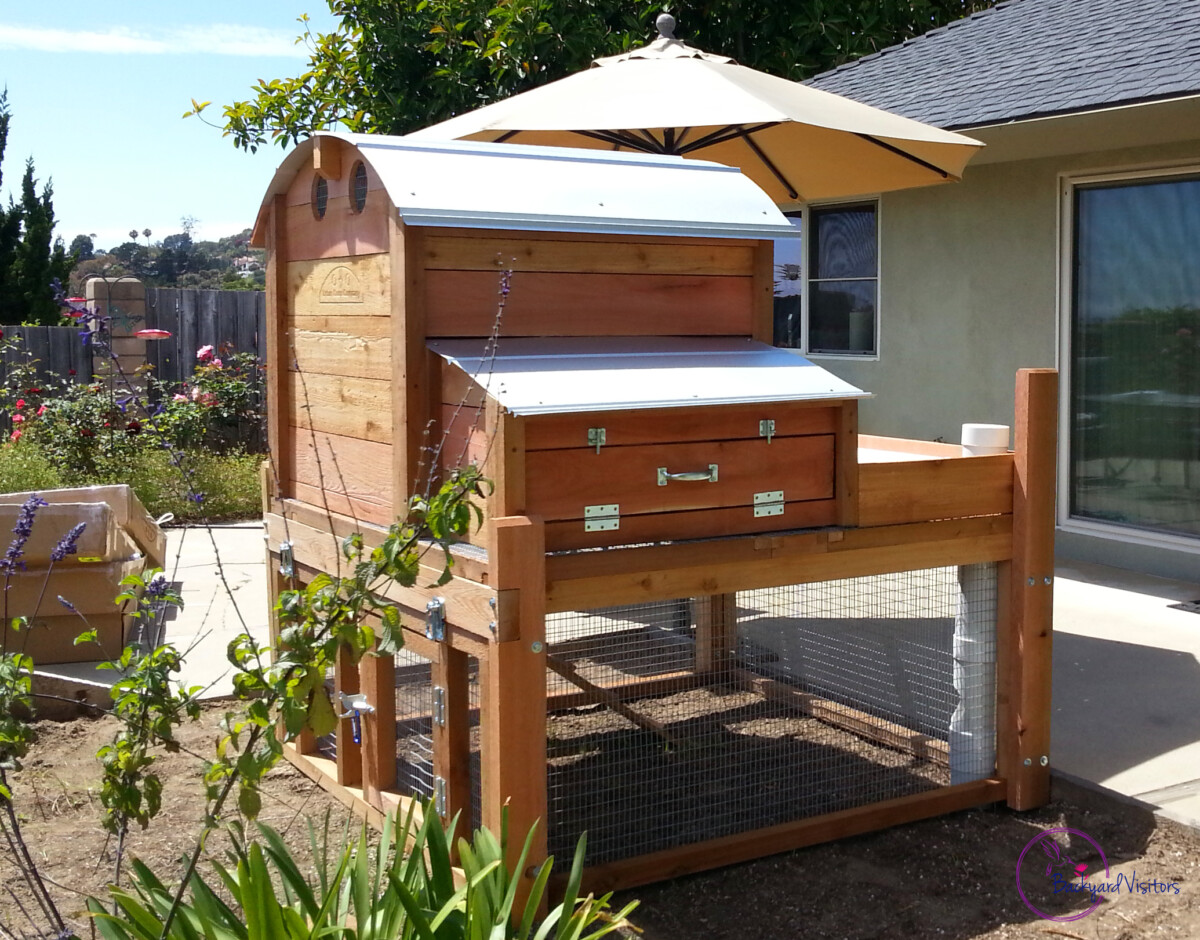
My chicken coop is well designed and it comes with a watering trough and a separate feed trough that fits in the coop and is placed strategically so that the food and the water do not mix and make a mushy mess. The coop also incorporates nesting boxes and roosting bars. It has a ladder/plank for the chickens to walk up to roost for the night or for them to access a nesting box to lay their eggs. The plank is designed to be pulled up by a rope so I can close the chickens in at night to protect them from predators.
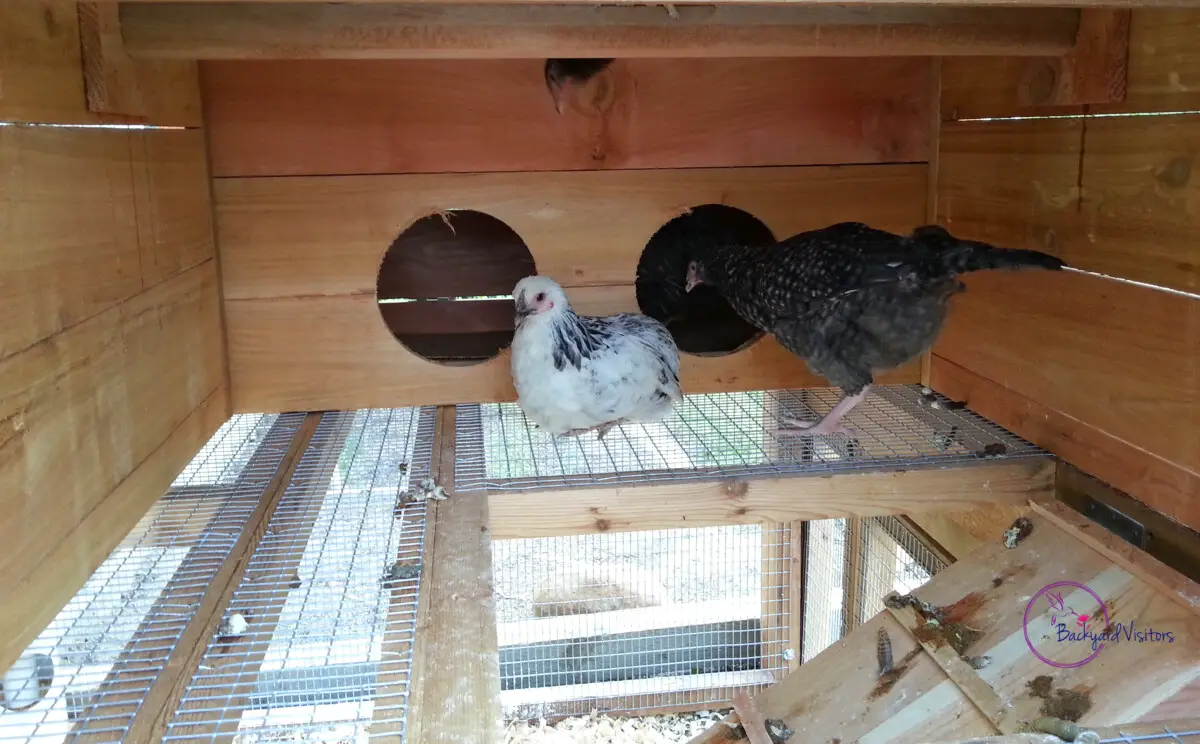
Since protecting my chickens is important to me, the coop is set on a concrete slab that does not allow predators to dig under the coop. The coop has locking doors on the top roosting and nesting level and bottom feeding level.
Pros and Cons Of The Initial Cost Of Setting Up a Coop
- Pros of Setting Up a Coop:
- Self-sufficiency in producing eggs.
- Potentially healthier poultry as you control their diet and living conditions.
- Educational value for learning about animal care and agriculture.
- Enjoyment and therapeutic benefits from interacting with animals.
- Cons of Setting Up a Coop:
- Upfront costs are affected depending on materials and size.
- Requires time for maintenance and caretaking.
- Potential for attracting predators or pests.
- Local zoning laws might restrict the ability to keep chickens.
- Costs Involved:
- Building materials for the coop: $200-$2000
- Fencing for protection: $50-$500
- Chickens: $5-$30 per bird
- Feeding supplies and food: $20-$100 initially depending on the number of chickens
- Other supplies (e.g., water dispensers, nesting boxes): $50-$200
Read my other related articles:
- The Basics of Backyard Chicken Keeping: What You Need to Know
- Deciding If Backyard Chickens Are Right for You
- Understanding Local Regulations for Keeping Chickens
- Daily and Weekly Care Routines for Healthy Backyard Chickens
- What to Expect from Your Flock Of Backyard Chickens
- Common Myths About Keeping Chickens Debunked
- How Chickens Contribute to a Balanced Ecosystem at Home
Initial Set-Up Expenses for a Chicken Coop in Your Backyard
To embark on the journey of raising backyard chickens, understand the initial set-up expenses for a chicken coop in your backyard. This key investment will ensure they have a secure home to roost and thrive laying the groundwork for successful chicken keeping.
The primary cost involves the backyard chicken coop. You may choose to DIY your coop, or purchase a pre-fab one. Each option has its own set of costs. The DIY road is potentially less expensive but time-consuming. A pre-fab coop offers convenience at potentially a higher price. Furthermore, your local climate will dictate specific features such as insulation, affecting the overall cost.
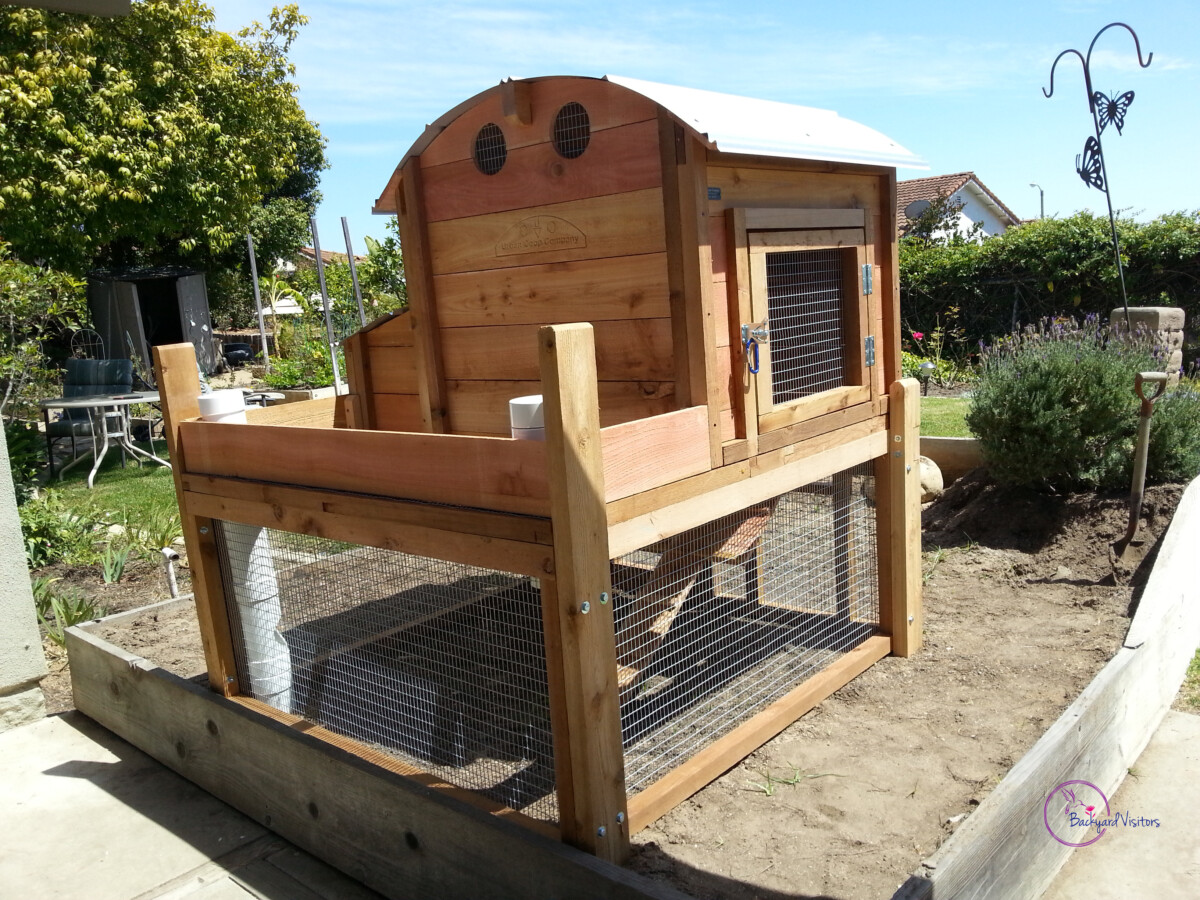
When prioritizing quality and longevity, materials vary widely in price. These decisions will impact your budget depending on the choices made such as wooden frames vs more resilient composites.
The initial cost of building a backyard chicken coop ranges from $200 for a basic DIY project to over $3,000 for a custom-built or high-end pre-fab coop. Your specific needs, the number of chickens, and the features you desire will significantly influence the final cost for prospective backyard chicken owners.
In addition to the coop, it is crucial to factor in the cost of fencing or netting materials when creating a chicken run that safeguards your chickens from predators. This added security can cost approximately $50-$200.This secures the perimeter around your coop and gives your chickens ample space to roam safely.
The size and design of the coop affects cost. Each chicken requires approximately 3 to 5 square feet inside the coop and 10 square feet in the run. I built my attached chicken run to allow them plenty of space to roam. My run is 8’ wide and 40’ long. That equates to 64 square feet for each of my five chickens.
More chickens means a larger coop and run, leading to higher material costs.
Other considerations which will raise the initial cost of constructing a chicken coop is the ease of accessibility by installing doors and windows that facilitate convenience for cleaning and egg retrieval. Additionally, a well-ventilated coop is crucial for the chickens’ health, which means adding extra windows or vents that will slightly increase your initial spending.
Is Raising Chickens Financially Worth The Investment?
As you delve into the world of raising chickens in your backyard arises a critical question whether the initial cost and setup of a chicken coop justifies the expenses. To determine whether raising chickens is financially worth the investment involves weighing the initial and ongoing costs against the benefits, such as fresh eggs, meat, and the potential for reduced waste through composting.
Initial setup costs include purchasing and constructing the coop/run with nesting boxes including equipment for providing water, lighting and miscellaneous supplies and the purchasing of the chickens. Ongoing costs include feed, bedding, healthcare (medications and supplements), and possibly expansion as your flock grows. Also the ongoing purchasing of chickens if you raise chickens for meat.
In the financial analysis, consider the initial setup costs of $500 – $1500 and the monthly costs of $20 – $40. The break-even point depends on how many eggs and how much meat you would otherwise buy. The break-even point may be reached within 1-2 years, especially if you value organic or free-range products.
For the long-term savings over several years, the investment can pay off, especially with a well-maintained flock, leveraging the benefits of composting and pest control and the continued production of eggs and meat.
The initial cost of setting up a coop varies widely, depending on your approach. There is the option of a simple do-it-yourself project, which may save you money upfront, however it will require more maintenance in the long run. Alternatively, investing in a professionally built coop may initially seem pricey, yet often means less future issues. The cost of building the structure also includes the price of essential supplies and modifications to make the space safe and comfortable for your chickens.
The joy of looking into your backyard and seeing your flock thrive is indeed rewarding. Beyond the eggs, raising chickens is a source of pest control adds to your compost materials, making your garden healthy.

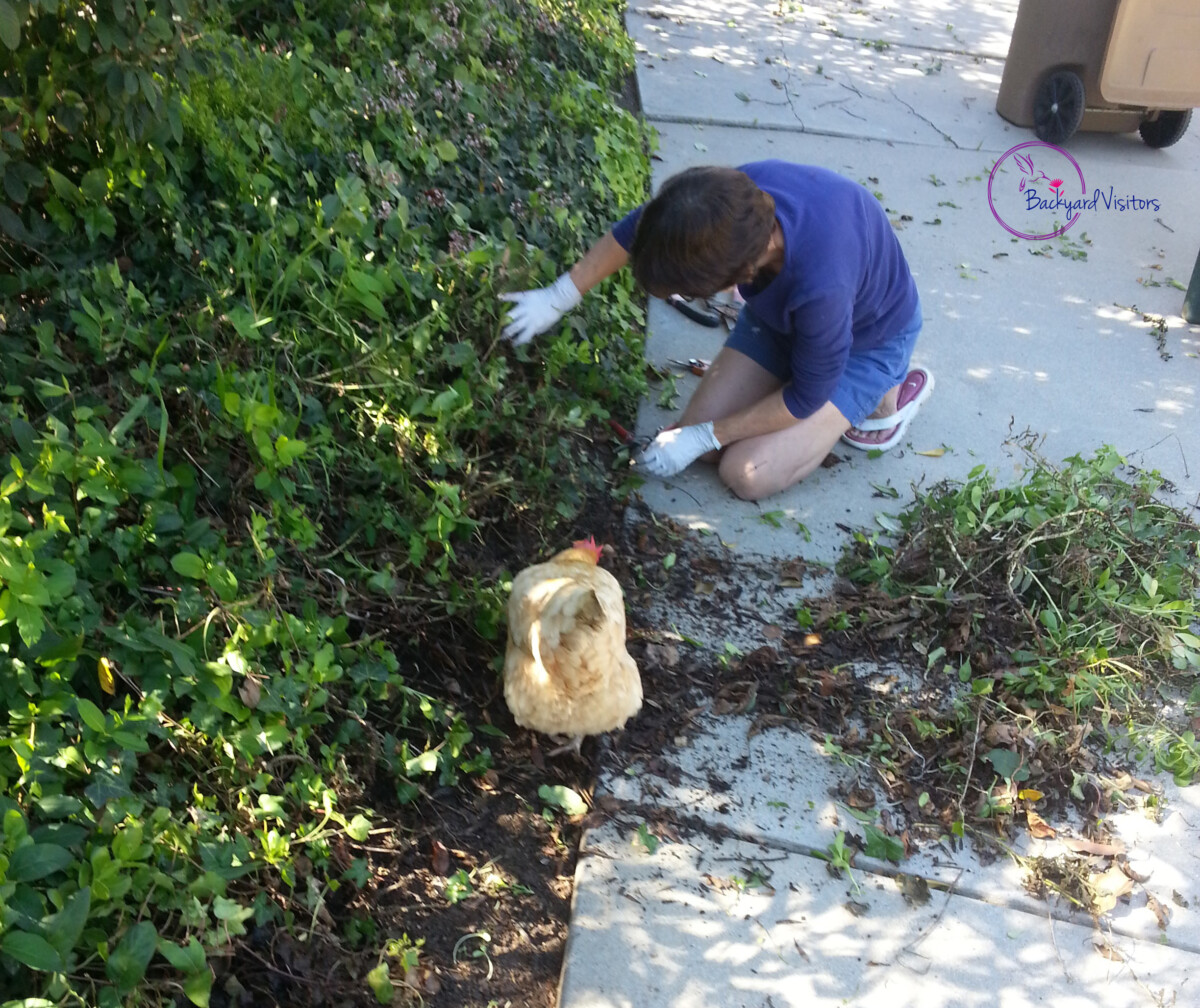
There are less tangible benefits which encompass the sense of accomplishment from building a sustainable, small-scale food system right in your backyard. The educational value it provides to families with young children is immeasurable. They will learn about the responsibility of care, the sources of their food, and the cycle of life, lessons that are invaluable in today’s disconnected world.
When my family finally decided on raising backyard chickens it was a glorious and momentous event. The coop arrived and was set up but the journey actually began when we picked our new members of the family at the local feed store and named them. Once named, there was no turning back!
The educational value of raising backyard chickens is limitless. There definitely was a learning curve for all of the members in my family however the joy the chickens brought us was wonderful and well worth it.
Initially, after the newness wore off, the routine of feeding, watering and cleaning the coop were chores to navigate. Initially, the pullets were confined to their coop for 4-6 weeks to imprint the coop as their home. Then, since we purchased pullets (chickens not yet mature enough to lay eggs – I call them “teenagers”), the wait seemed forever until laying began.

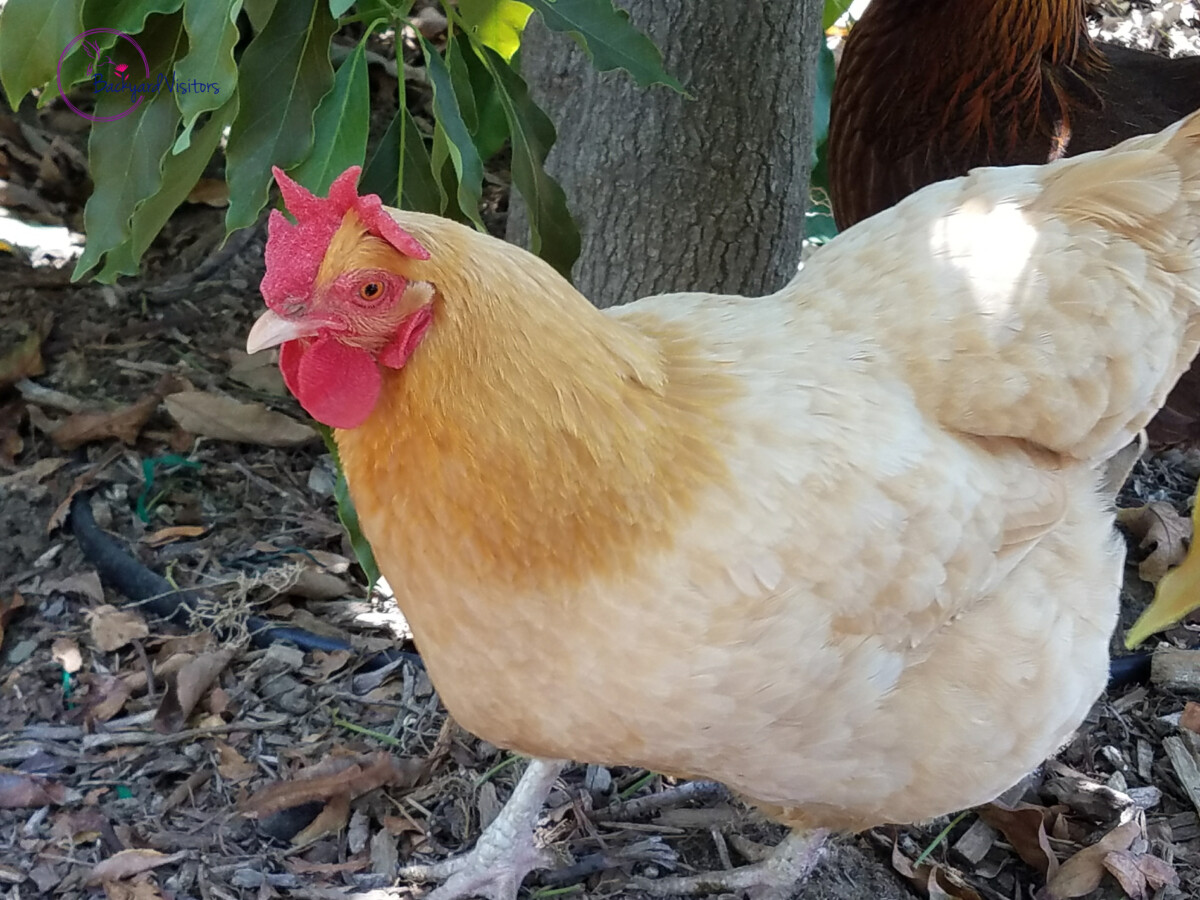
The first laid egg was an extraordinary day as we celebrated the miracle. Trying extra hard to be gentle with what we considered a fragile egg, we soon found out that the shell was harder than the store bought eggshell and the inside membrane was tougher.
Once the egg was cracked, to our surprise, the color of the yolk was a vibrant orange! After inquisitive research, we discovered that the eggshell is harder because of the calcium provided to our chickens in their feed. The egg yolk is more vibrant because our chickens are allowed to free range in the yard and consume as much greens as they want.
From there, the questions began…How are the eggs made? How do the hens color the eggs? Why are the eggs different sizes? How many eggs do chickens lay in a year? Is molting a way for the chickens to change their outfit? And so, our educational process began connecting research with actual lab experience. At the same time, we had pets that produced food and were an asset to the biological world.
Is raising chickens financially worth the investment? One must consider if these benefits outweigh the ongoing expenses. If you are prepared for the initial cost and understand the ongoing commitments, the financial return, combined with the personal satisfaction and ecological benefits, certainly make it a worthwhile endeavor for many families and individuals passionate about sustainability and self-sufficiency in their backyard.
Financially, raising chickens can be worth the investment, especially if you value fresh, organic eggs and meat, and are willing to invest the time and effort required for their care. The initial and ongoing costs are offset by the benefits and potential savings, making it a viable option for many households.
Pros and Cons Of The Initial Cost
Of Raising Chickens
- Pros:
- Long-term savings on egg and meat costs.
- Potential to sell eggs or chicks for income.
- Eligibility for agricultural tax exemptions and credits.
- Increased property value from sustainable practices.
- Composting and waste reduction.
- Pest control.
- Education and enjoyment.
- Cons:
- High initial costs for housing and fencing.
- Cost of purchasing healthy chickens and chicks.
- Need for predator protection measures.
- Expenses related to feed, healthcare, and maintenance.
- Time and labor of raising chickens.
- Health risks for chickens.
Breaking Down the Costs: Coop, Feed, and Care
When you first consider the joy of your own backyard chickens, you might wonder about the financial commitment. From the coop cost to the needs for care, it is clear that planning is essential. The initial investment varies significantly based on the size and design you choose. A basic coop may limit initial costs but upgrading or expanding later will increase expenses. Choose the right coop from the start as this will save you more money long-term.
The next substantial expense is feed, an ongoing expense that frequently dents your budget. Nutritious, high-quality feed is essential to keep your chickens healthy and productive. It is the quantity but also the quality that counts to ensure that your flock receives all the necessary nutrients. Organic and non-GMO feeds tend to be pricier, however they contribute to better egg quality and healthier chickens.
Lastly, the overall care includes more than just feed and water. There is bedding to consider, which requires regular replacing to maintain a clean environment for your chickens. Also to be considered is healthcare, such as vaccinations, deworming, and the occasional veterinary visit. These are components that add to the overall cost and should be factored into your budget to avoid surprises.
The initial setup for your backyard chicken adventure demands some investment. Whether it is the coop cost or the costs associated with feed and care, each element is crucial. However, with diligent planning and a clear understanding of the ongoing costs, you will ensure that your backyard coop thrives. This breakdown though not in actual dollars provides the needed insight into what raising chickens would cost upfront and sustainably in your locale.
Click on to the next section where I will guide you through the cost to build a coop for backyard chickens; elaborate on materials and design considerations; and offer detailed steps and essential supplies needed to begin.
I will also discuss understanding the ongoing expenses of raising chickens and give you cost control tips to maintain your coop, to further ensure that your venture in poultry keeping is as rewarding as it is enriching.
Chicken Coop, Feed, and Care Costs
- Chicken Coop Costs:
The cost of a chicken coop depends on the size, materials used, and whether it is purchased ready-made or built from scratch. Pre-built coops range from $200 to over $3,000 or more. Building a coop yourself might cost between $200 and $2,000+, not including your time and tools, depending on material quality and coop complexity. - Chicken Feed Costs:
The cost of chicken feed varies significantly based on the type of feed, the age of the chickens, and regional price differences. On average, the cost is approximately $15 to $30 for a 50-pound bag of feed. Layer pellets, starter feed, and organic varieties differ in price. Chickens consume approximately ¼ pound of feed per day. - Chicken Care Costs:
General chicken care includes expenses such as health checkups, parasite control, and vitamin supplements. Vet visits may cost between $50 to $100 per visit depending on the services required. Additional costs may include bedding materials such as pine shavings, that cost around $5 to $15 per bag and may need to be replaced every few weeks depending on the coop setup and number of chickens.
The Cost to Build a Coop for Backyard Chickens
When embarking on the journey of raising backyard chickens, the essential element to consider is the chicken coop. Understanding the full scope of what chicken coops cost is intimidating, however is crucial to ensure a safe and comfortable home for your feathered friends. The coop cost varies widely depending on several factors including size, materials, and whether you plan to build the coop yourself or purchase a pre-fab one.
The initial step to estimate the coop cost involves deciding the scale and design of the coop. A basic small coop may set you back a few hundred dollars, while a larger, more elaborate coop could cost several thousand.
Efficiency in planning and sourcing materials will play a big role in controlling expenses. The construction of a chicken coop requires a balance between durability and aesthetics. You do not want to cut corners on materials that ensure the longevity and safety of the coop, thus potentially driving up the cost initially but saving in the long term.
For many enthusiasts, the decision to build a chicken coop offers not only a cost-saving measure but also an opportunity for customization. It affords the flexibility to craft a dwelling that fits your specific space and meets the needs of your chickens. Whether you are a novice or a seasoned builder, numerous resources and coop plans are available to guide you through the process. This hands-on approach significantly reduces the overall chicken coop costs, especially when you use recycled or repurposed materials.
Before you dive into building, consider the ongoing commitment. Chickens need a safe environment, protection from predators and a space that keeps them healthy and happy. Features such as adequate ventilation, insulation, and easy access for cleaning contributes to the efficiency of the coop. While these features may add to the upfront coop cost, they are invaluable for the well-being of your chickens and will ensure that you are set up for success right from the start.
Materials and Design Considerations for Your Coop and Run
Planning your backyard chicken coop involves several key materials and design considerations to ensure that your flock thrives in a safe and comfortable environment. When choosing materials for your chicken coops, it is crucial to select durable, weather-resistant options that withstand the elements and protect your chickens from predators.
The foundation of any sturdy coop is its framing, with treated wood being a frequently chosen material due to its longevity and strength. However, sustainability-minded chicken owners may opt for reclaimed wood, which is not only environmentally friendly but also cost-effective.
As for the design, dimension plays a significant role in the comfort and health of your chickens. Each chicken requires approximately a minimum of 3-5 square feet of space inside the coop and about 10 square feet in the run.
My chicken coop is placed on a concrete slab to prevent any predators from digging under the coop to access my chickens. The coop is protected with 16 gauge galvanized hardware cloth to prevent predators from attempting to claw or chew through the wire. The doors are locked at night using a carabiner that is possum proof. The ladder inside the chicken coop under the roosting bars is lifted with the pull of a rope from the outside and secures the chickens safely for the night.
Ensuring sufficient space helps to prevent overcrowding, which leads to health issues and aggressive behavior among chickens. The coop should also include essential features such as nesting boxes, perches, and an easily accessible door for cleaning and egg collection.
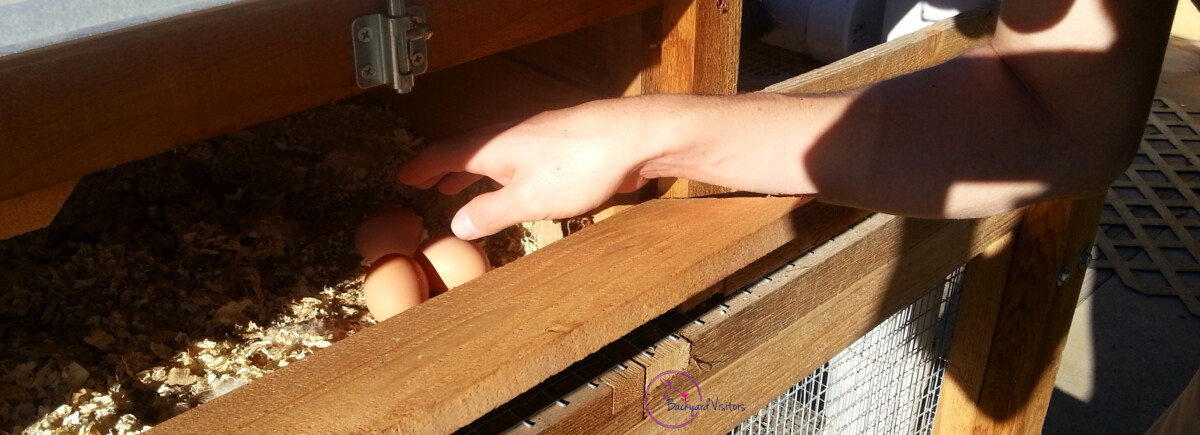
Additionally, proper ventilation is paramount to prevent respiratory issues in the chickens, making it wise to incorporate windows or vents that provide fresh air while keeping the coop insulated from extreme temperatures.
It is important to include a secure run attached to your coop. A run provides chickens with a protected area to roam, forage, and exercise, which is vital for their physical and mental health. When constructing the run, use robust, galvanized wire mesh to keep out predators and to ensure that the chickens are safe. The design of the run should also consider ease of access for both the chickens and the owner.
I built my attached chicken run to allow my chickens plenty of space to roam. My run is 8’ wide and 40’ long. That equates to 64 square feet for each of my five chickens.
My coop and run is on the east side of my house therefore they are in the shade from noon until the rest of the afternoon.
When embarking on your chicken-raising journey, remember that the initial setup requires thoughtful consideration of both the coop and the run. By focusing on strong, adaptable materials and a thoughtful design that takes into account the needs of your feathered friends, you will create a welcoming and efficient environment that lays the groundwork for a rewarding backyard poultry experience.
Top 12 Key Materials Needed For A Chicken Coop And Run
- Wood: Used as the primary construction material for framing, walls, and laying boxes of the chicken coop and run. Provides structural support and protection from elements. Cost varies from approximately $200 for a basic structure to $800 or more.
- Wire Mesh: Galvanized wire mesh is essential for enclosing the run area to keep chickens safe from predators while allowing them air and light. Galvanization adds a layer of zinc to protect the wire from rust and corrosion, making it a durable choice for outdoor applications. A roll of galvanized chicken wire costs between $20 – $120 depending on the size of the role.
- Posts: Wooden posts or metal T-posts are used to support the fencing. Wooden posts are more aesthetically pleasing but require more maintenance. T-posts are easier to install and very durable. Costs range from $3 to $10 per post.
- Gate: A simple gate can be made from the same materials as the fence with added hinges and a latch, or you can buy a pre-fab gate for $30 to $100.
- Tools and Supplies: Durable, weather-resistant nails and screws are needed to assemble and secure the wood and mesh components of the coop. A basic set costs approximately $50 – $150. Other tools include a hammer, staple gun, post digger, and possibly a saw if cutting posts or constructing a wooden gate.
- Hinges and Latches: Hinges for the doors/gates and secure latches are crucial to ensure that the coop can be opened for cleaning and closed securely to protect the chickens. A basic set up cost can range from approximately $15 – $45.
- Roofing Material: Weatherproof roofing material, such as shingles or metal sheets, is required to shelter the coop from rain and provide shade. To protect chickens from aerial predators or harsh weather use a netting. Costs can vary widely, from $15 for simple netting to $100+ depending on the size for more durable roofing materials.
- Insulation Material: Insulation helps regulate the temperature inside the coop, keeping chickens warm in winter and cool in summer. Rolls or panels can cost approximately $30 to $60.
- Bedding: Materials such as straw and shavings of pine or wood are used for bedding to absorb droppings and to keep the coop floor dry and comfortable for the chickens. Costs are approximately $3-15 per bale depending on the region.
- Nesting Boxes: Boxes filled with soft materials where hens can lay eggs. These should be easy to access for collection and cleaning. Pre-fab boxes are about $50, or less if built from leftover materials.
- Perches: Wooden perches or branches for chickens to roost on at night; they provide a natural and comfortable sleeping environment. The cost ranges from $5 – $30 depending on the type of wood and length required.
- Ramp or Stairs: Provides access to raised coops. They can be built with spare wood planks, purchased pre-fab from wood or lightweight metals or custom with premium materials from around $20 to $50 or more.
Prices for materials will fluctuate based on market conditions and are also affected by regional variations in wood costs therefore it is a good idea to check local hardware stores, lumber yards or online retailers for current pricing estimates based on current market prices before beginning your project.
Comprehensive Guide to Set-Up a Chicken Coop
Welcome to my comprehensive guide on how to set up a chicken coop in your own backyard. For anyone diving into the world of backyard chickens, understanding the initial costs and requirements for setting up a coop is crucial. Whether you are planning to build from scratch or purchase a pre-fab structure, several factors influence the overall expenditure and effort involved.
The journey to raising chickens starts with a well-thought-out design and understanding the materials needed. Let us dive deeper into specifics, focusing on building costs and how to effectively manage your setup.
When considering the construction of a chicken coop, size and materials play pivotal roles. Consider the number of chickens you plan to keep as this affects the size of the coop and, subsequently, the quantity of materials. Durable and secure materials are necessary to protect your flock from weather and predators. Setting a budget for these helps you steer clear of unexpected expenses. Quality investments pay off in the long run by minimizing future repairs and upgrades.
Taking the DIY route for your chicken coop is quite rewarding and cost-effective. You can tailor your coop to meet specific needs and preferences. Not only does this ensure a customized habitat for your chickens, but it also enhances your understanding of their needs as a hands-on approach that enriches your experience as a chicken owner.
Proper planning and execution to set up your chicken coop are key to a successful start in backyard chicken raising. Focus on quality building and mindful budgeting, to create a cozy and safe environment for your feathered friends without breaking the bank, achieving both satisfaction and a sound investment.
Detailed Steps and Necessary Supplies to Begin
Diving into the world of backyard chicken coop building is both exciting and a bit daunting for first-timers. However, with the right steps and essential supplies, you will find the journey to raising chickens to be rewarding. Understanding the basics of the needs of your chickens is crucial. From a sturdy coop to protecting them from the elements and predators to the necessary feeding and watering equipment, every detail counts.
The first step in your backyard chicken journey is selecting the appropriate location for your coop. Important considerations are sunlight, drainage, and proximity to your house. Once you have found the perfect spot, gathering materials is next. You will need durable wood for the frame, wire mesh for ventilation and protection, and proper roofing materials to keep your chickens dry and comfortable. Do not forget the importance of having easy access for cleaning and egg collection!
Next, focus on the size and design of the coop. It should be spacious enough to comfortably accommodate all your chickens, with enough room for them to roam and nest. Include perches for your chickens to sleep and nest boxes for egg laying.
Insulation and proper ventilation ensures that your chickens stay healthy throughout the seasons.
Feeding and watering your chickens are next on the list. Invest in a high-quality feeder and waterer that will maintain a clean supply of food and water. It is crucial to protect these from contamination and ensure they are easily accessible to your birds. Health considerations are also paramount. Keeping a well-stocked first aid kit designed for poultry care is essential in addressing any unexpected issues swiftly.
As you embark on this exciting project, make sure you are equipped with all the necessary tools and knowledge to create a safe and welcoming environment for your chickens. By planning properly and having a clear understanding of the needs of your flock, you will ensure that the initial setup of your backyard chicken coop goes smoothly and sets the stage for a fruitful venture in chicken keeping.
Understanding the Ongoing Expenses of Raising Chickens
When you dive into the world of backyard chickens, understanding the ongoing expenses linked to raising them is important. Most seasoned chicken owners will share that while the allure of fresh eggs is compelling, there is more to the story when discussing the total cost of chickens. Initial costs may seem steep, but the ongoing expenses can also add up. These expenses include regular feed, healthcare, maintenance of the coop, and sometimes unexpected costs due to weather or predators.
The cost of feed is an ever-present figure. Chickens need a quality diet to maintain their health and productivity. From pelleted feeds to grains and greens, ensuring your chickens have a balanced diet contributes significantly to your recurring costs.
Healthcare, though often overlooked, is vital. Regular check-ups, vaccinations, and treatments for possible ailments require time and money. Even the most robust chickens face health issues, and addressing these proactively prevents larger expenses down the line.
Maintenance of the coop is another ongoing cost that cannot be ignored. Weather conditions will deteriorate your chicken coop faster than you might expect, requiring repairs or upgrades for safety and comfort. This may involve replacing or repairing the roofing, securing the fencing, or improving the insulation. These upkeep tasks ensure your chickens remain safe from predators and severe weather, adding to the expenses.
However, the joys of raising backyard chickens often outweigh these costs for many enthusiasts. The rich, flavorful eggs, the joy of watching your flock, and the natural pest control they provide make the investment worthwhile. Plus, planning your budget with these ongoing expenses in mind helps to manage costs effectively, keeping surprises to a minimum.
While the costs of raising chickens can accumulate, effective planning and understanding the detailed expenses will greatly aid in managing your budget. The next section in my series will delve into cost control tips for maintaining your chicken coop efficiently, ensuring your chicken venture remains as cost-effective as possible.
Cost Control Tips for Maintaining Your Chicken Coop
The world of backyard chickens is both a joyous and a practical venture. If you have already navigated the initial hurdles of setting up a coop and are now focused on maintenance, it is significant to consider cost-effective strategies that keep your chickens thriving without breaking the bank. Effective cost management begins with the design and materials used in your chicken coop and run.
Opting for durable materials may have a higher upfront cost, but they reduce the need for frequent replacements and repairs, ultimately saving money in the long term.
Moving on to the day-to-day aspects, regular maintenance is key to avoid significant expenses down the line. Simple routines such as keeping the coop clean and ensuring it is free from pests will prevent health issues in your chickens that can lead to costly vet bills. Implementing preventative measures does not have to be expensive. For example, installing proper ventilation will curb moisture-related deterioration and the diseases that thrive in damp environments.
Another area of cost control is in the feeding and care of your chickens. Bulk buying of feed and supplies is a common strategy to decrease costs. When doing so be mindful of storage to prevent spoilage. Additionally, consider cultivating a garden with chicken-friendly plants that provide both nutrition and environmental enrichment for your chickens. This fosters their health and reduces the amount of feed needed.
If you are handy, constructing your own additions such as nesting boxes or a secure run will be much more cost-effective than purchasing pre-fab products. Utilizing recycled or repurposed materials for these projects will also help to keep costs low. It is satisfying to build features tailored to your chickens’ needs, and it gives a personal touch to your setup.
In conclusion, while the joys of raising chickens are plentiful, it is imperative to stay mindful of the ongoing costs involved. By adopting these cost control tips and caring for your coop effectively, you ensure a happy, healthy flock and a manageable budget. Whether it is through careful material selection, regular maintenance, or creative cost-cutting measures, staying proactive about costs will lead to greater success in your chicken-raising endeavors.
Check out my other posts on Backyard Chickens
Frequently Asked Questions
Q: What are the typical initial costs involved in setting up a backyard chicken coop?
A: The initial costs for setting up a backyard chicken coop will vary significantly depending on factors such as the size, materials, and design of the coop. Basic coops using economical materials might cost less, while higher-end materials and larger designs can increase the initial investment. Additionally, you will need to consider costs for essential accessories such as feeders, waterers, and nesting boxes.
Q: Can economic choices in materials impact the long-term durability of a chicken coop?
A: Yes, choosing economical materials such as repurposed wood or wire can help reduce initial expenses. However, it is important to balance cost with quality. Higher-end materials such as cedar may be more expensive, but they will offer greater durability and reduce long-term maintenance costs, ensuring that the coop stands the test of time.
Q: What size and design considerations are important when planning a chicken coop?
A: Each chicken needs approximately 3 to 5 square feet of space inside the coop and 10 square feet in the run. The coop should have easy accessibility for cleaning and egg retrieval and be well-ventilated to keep the chickens healthy. Additionally, features such as fortified fencing and automated systems for maintenance can be included depending on local climate conditions and security needs.
Q: Is raising backyard chickens financially worth the investment?
A: Raising backyard chickens is financially rewarding if done correctly. Beyond the initial setup costs, ongoing expenses such as feed and healthcare need to be managed. However, the benefits of fresh eggs, natural pest control, and the joy of caring for chickens outweighs these costs. The project also offers educational value for families and promotes sustainable living practices.
Q: What ongoing costs should I expect after setting up my chicken coop?
A: After the initial setup, ongoing costs include expenditures for chicken feed, healthcare, maintenance of the coop, and occasional structure upgrades. Regular preventive maintenance, such as ensuring proper ventilation and structure stability, will help reduce unexpected expenses. Planning with these ongoing costs in mind is essential for maintaining a cost-effective and rewarding backyard chicken experience.
Wishing You A Successful Backyard Chicken Coop Setup!
Backyard Visitors participates in affiliate programs which compensate us for referring traffic.

